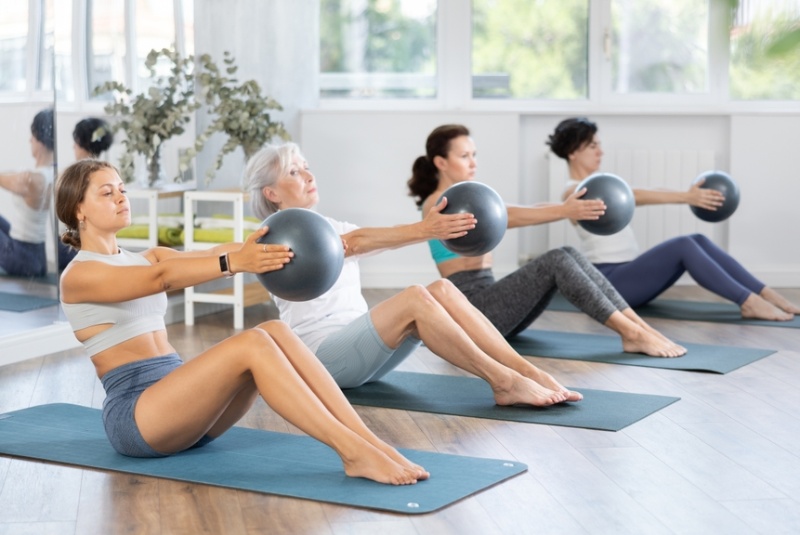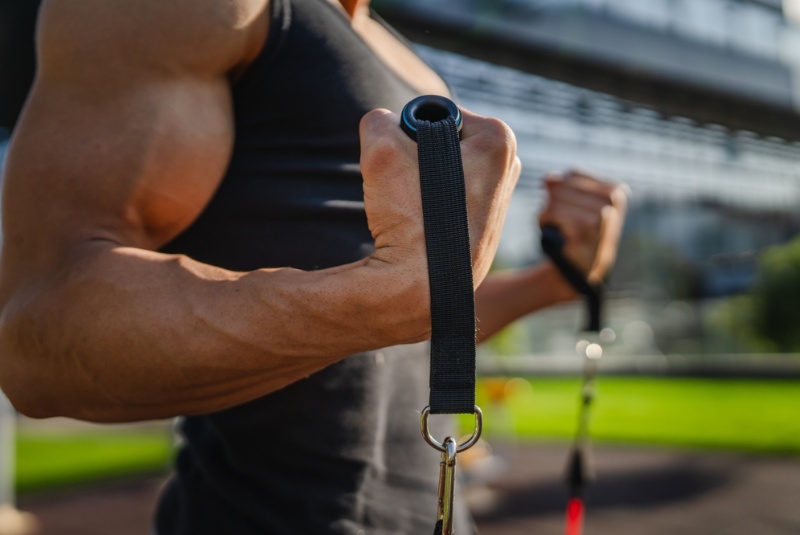As we age, our bodies undergo various changes that can affect our fitness levels, strength, flexibility, and overall health. However, staying active is crucial for maintaining physical and mental well-being throughout the aging process. Adapting your fitness routine to meet the evolving needs of your body is key to aging gracefully and staying healthy. This guide explores how to modify your workout regimen as you age, offering practical tips to help you maintain your fitness, prevent injury, and continue enjoying an active lifestyle at any age.
Recognize and Respect Your Body’s Changes
The first step in adapting your fitness routine as you age is to recognize and respect the changes that naturally occur in your body. These changes might include a decrease in muscle mass, bone density, and joint flexibility, as well as a slower metabolism. While these changes are a normal part of aging, they require adjustments in how you approach exercise. Instead of pushing your body to perform as it did in your younger years, focus on maintaining strength, mobility, and endurance through safe and effective exercises. By acknowledging and respecting your body’s changes, you can create a fitness routine that supports your health and well-being at every stage of life.
Incorporate More Low-Impact Exercises
As you age, your joints may become more susceptible to wear and tear, making low-impact exercises a better choice for maintaining fitness without causing injury. Low-impact exercises, such as swimming, cycling, walking, and yoga, are gentle on the joints while still providing cardiovascular benefits and promoting muscle strength. These activities help to keep your body moving without placing excessive stress on your knees, hips, or back. Incorporating more low-impact exercises into your routine allows you to stay active and fit while reducing the risk of joint pain and injury, making it easier to sustain your exercise habits over time.
Focus on Strength Training to Combat Muscle Loss
Muscle loss, also known as sarcopenia, is a common challenge as we age, but strength training can help combat this process. Incorporating weight-bearing exercises, such as lifting weights, resistance band workouts, or bodyweight exercises, into your routine helps maintain and even build muscle mass. Strength training also supports bone density, reduces the risk of osteoporosis, and improves balance, all of which are crucial for preventing falls and maintaining independence as you age. Aim to include strength training exercises at least two to three times per week, focusing on all major muscle groups. By prioritizing strength training, you can keep your muscles strong and resilient throughout the aging process.
Prioritize Flexibility and Mobility Work
Flexibility and mobility tend to decrease with age, leading to stiffness and a limited range of motion. To counteract this, it’s essential to incorporate stretching and mobility exercises into your fitness routine. Activities like yoga, Pilates, and dedicated stretching sessions can help improve flexibility, enhance joint mobility, and reduce the risk of injury. Stretching also promotes circulation and relieves muscle tension, contributing to overall comfort and ease of movement. By prioritizing flexibility and mobility work, you can maintain your body’s ability to move freely and comfortably, making everyday activities easier and more enjoyable as you age.

Pay Attention to Balance and Stability
Falls are a significant concern for older adults, making balance and stability exercises a crucial component of any fitness routine as you age. Incorporating exercises that challenge your balance, such as standing on one leg, using a balance board, or practicing tai chi, can help improve your stability and coordination. These exercises strengthen the muscles that support your joints, enhance proprioception (your body’s sense of its position in space), and reduce the likelihood of falls. Regularly working on balance and stability not only helps prevent injuries but also boosts confidence in your ability to move safely and independently.
Adjust the Intensity of Your Workouts
As you age, it’s important to adjust the intensity of your workouts to match your current fitness level and physical condition. While it’s natural to slow down over time, staying active is still crucial for maintaining health. Focus on finding the right balance between challenging yourself and avoiding overexertion. You may need to reduce the intensity of certain exercises, shorten workout durations, or take more frequent rest days to allow for recovery. Listening to your body and making adjustments as needed ensures that you continue to benefit from exercise without risking injury or burnout.
Incorporate More Recovery Time
Recovery becomes increasingly important as you age, as your body may take longer to repair and rebuild after exercise. Ensuring adequate recovery time between workouts is essential for preventing overtraining, reducing the risk of injury, and allowing your muscles to heal and strengthen. Incorporate active recovery days with light activities such as walking, stretching, or gentle yoga, and make sure you’re getting enough sleep to support your body’s recovery processes. Additionally, consider adding practices like massage, foam rolling, or meditation to your routine to enhance relaxation and promote overall well-being. Prioritizing recovery time helps you stay consistent with your fitness routine while supporting your body’s natural healing processes.
Listen to Your Body and Modify as Needed
As you age, it’s essential to listen to your body and be mindful of its signals. If you experience pain, discomfort, or fatigue, take it as a sign to modify your routine, reduce the intensity, or take a rest day. Ignoring these signals can lead to injury or burnout, which can set back your fitness progress. Instead, focus on exercises that feel good and are sustainable for your current fitness level. Don’t be afraid to make modifications, such as using lighter weights, reducing repetitions, or opting for alternative exercises that better suit your needs. By listening to your body and making adjustments as needed, you can continue to enjoy the benefits of exercise while minimizing the risk of injury or overtraining.
Explore New Activities That Suit Your Lifestyle
Aging provides an excellent opportunity to explore new activities that align with your changing fitness needs and interests. If traditional gym workouts no longer appeal to you, consider trying activities like swimming, dancing, gardening, or hiking. These activities not only keep you physically active but also add variety and enjoyment to your routine. Exploring new forms of exercise can keep you motivated and engaged, helping you maintain a consistent fitness routine. By staying open to new experiences, you can discover activities that bring you joy while supporting your health and well-being as you age.
Seek Professional Guidance When Needed
As you adapt your fitness routine to suit your aging body, seeking professional guidance can be invaluable. Personal trainers, physical therapists, or fitness instructors with experience in working with older adults can provide tailored advice and help you create a safe, effective workout plan. They can assess your current fitness level, identify any limitations, and recommend exercises that support your goals while minimizing the risk of injury. Additionally, they can help you stay motivated and accountable, ensuring that you continue to progress in your fitness journey. Seeking professional guidance gives you the confidence to exercise safely and effectively, maximizing the benefits of your efforts.
Conclusion
Adapting your fitness routine as you age is essential for maintaining health, mobility, and overall well-being. By recognizing your body’s changes, incorporating low-impact exercises, focusing on strength and flexibility, and adjusting the intensity of your workouts, you can continue to enjoy the benefits of an active lifestyle throughout your life. Listening to your body, allowing for adequate recovery, and exploring new activities ensure that your fitness routine remains sustainable and enjoyable. With the right approach, you can stay strong, flexible, and energized, embracing the aging process with confidence and vitality.




